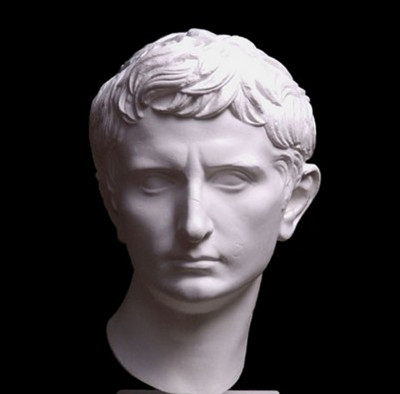Our head comes from this time, a year or two after Augustus became emperor. It was once part of a full-length statue that showed him as a warrior, slightly larger than life-sized. It's broken off at the neck but otherwise the bronze is in very good condition. It's an image that in one form or another would have been familiar to hundreds of thousands of people, because statues like this were set up in cities all over the Roman Empire. This is how Augustus wanted his subjects to see him. And although every inch a Roman, he wanted them to know that he was also the equal of Alexander and heir to the legacy of Greece. The distinguished Roman historian Susan Walker explains what is going on:
這尊頭像制作于奧古斯都稱帝后一至兩年內。這尊比真人略大,充滿了力量的頭像將他塑造為一名勇士。盡管雕像在頸部折斷,但其余部分的青銅仍狀況良好。這副面容以不同的形式出現在羅馬帝國的每一個城市里,為成千上萬的公民所熟悉。這就是奧古斯都都希望自己留給百姓的形象。雖然他是個地道的羅馬人,卻希望百姓知道他也是希臘文化的繼承者,功績堪與亞歷山大大帝比肩。羅馬歷史學家蘇珊沃爾克解釋道:
"When he had become master of the Mediterranean world and took the name Augustus, he really needed to find a new image. And he really couldn't copy Caesar's image, because Caesar looked like a crusty old Roman. He had a real warts-and-all portrait-very thin and scraggy, and bald, and very austere, very much in the manner of traditional Roman portraiture. So that image had become a little bit discredited, and in any case Augustus-as he now was-was setting up an entirely new political system, so he needed to have a new image to go with it. And having assumed this image when he was still in his thirties, he stayed with it until he died aged 76, so there's no suggestion in his portraits, even any subtle suggestion such as we see in the portraits of our Queen, for example, of any aging process at all."
在成為地中海地區的君主,接受了新銜之后,奧古斯都需要一個全新的形象。他不能復制凱撒的頭像,因為凱撒的肖像看起來就像個暴躁的羅馬老頭:骨瘦如柴兼又謝頂,采用了傳統的羅馬雕刻手法,完全未加美化,有損羅馬君主的威名。而現在奧古斯都正在建立一個全新的政治系統,因此需要一個全新的與之相稱的形象。他使用了自己三十多歲時的樣貌,直到七十多歲去世時仍未變更。他的所有雕像都沒有任何年齡的變化。
來源:可可英語 http://www.ccdyzl.cn/Article/201412/346350.shtml











